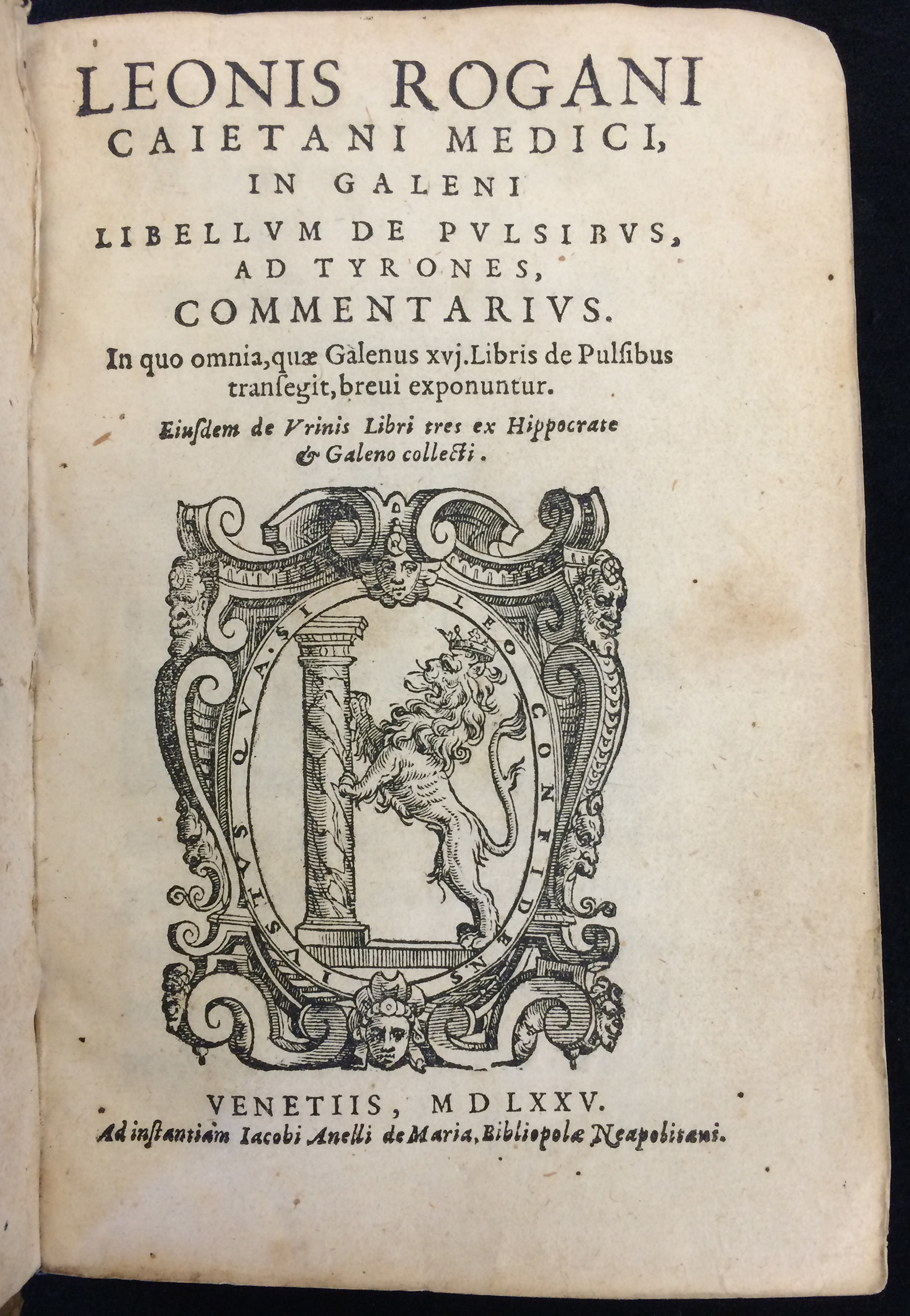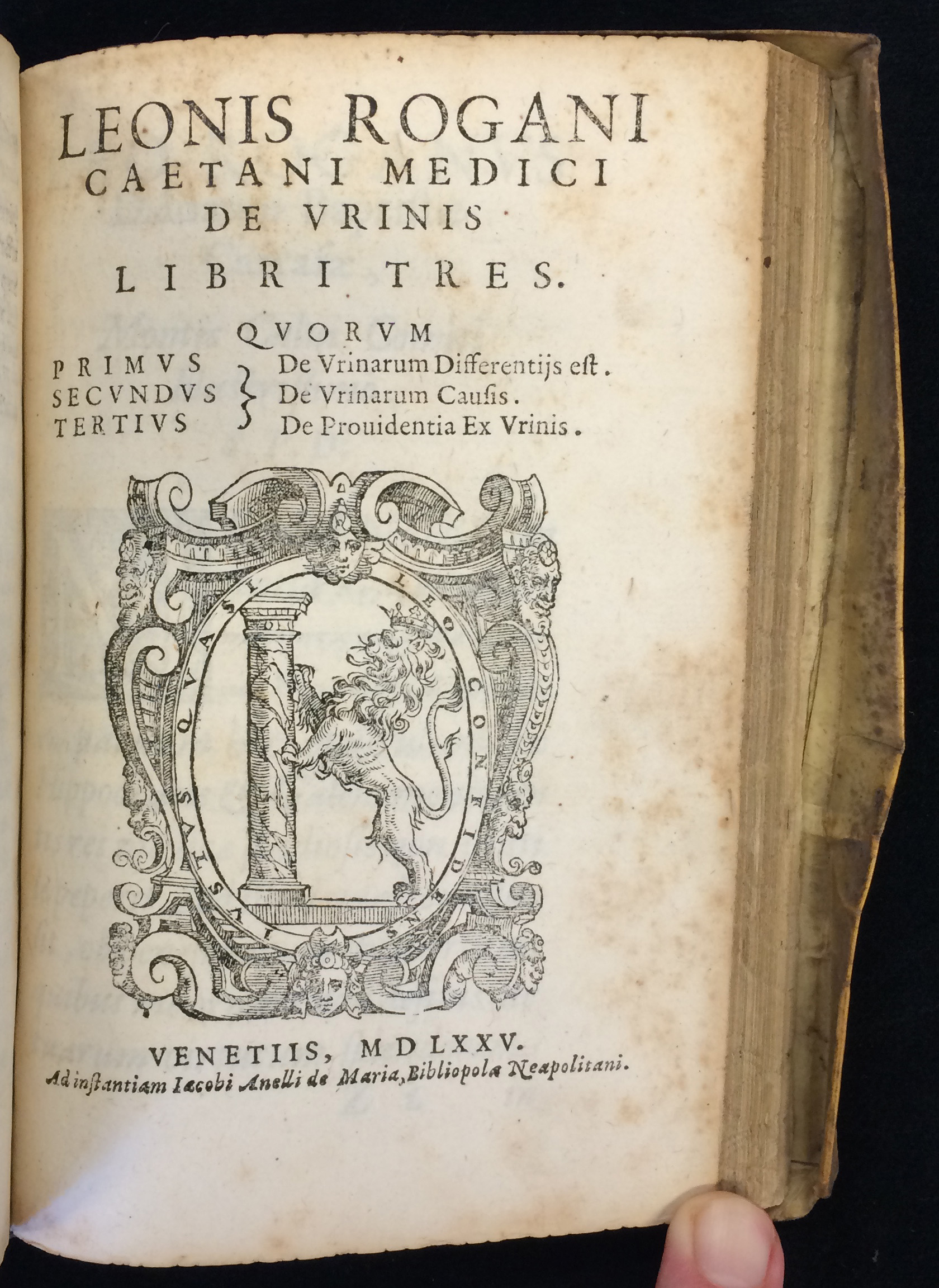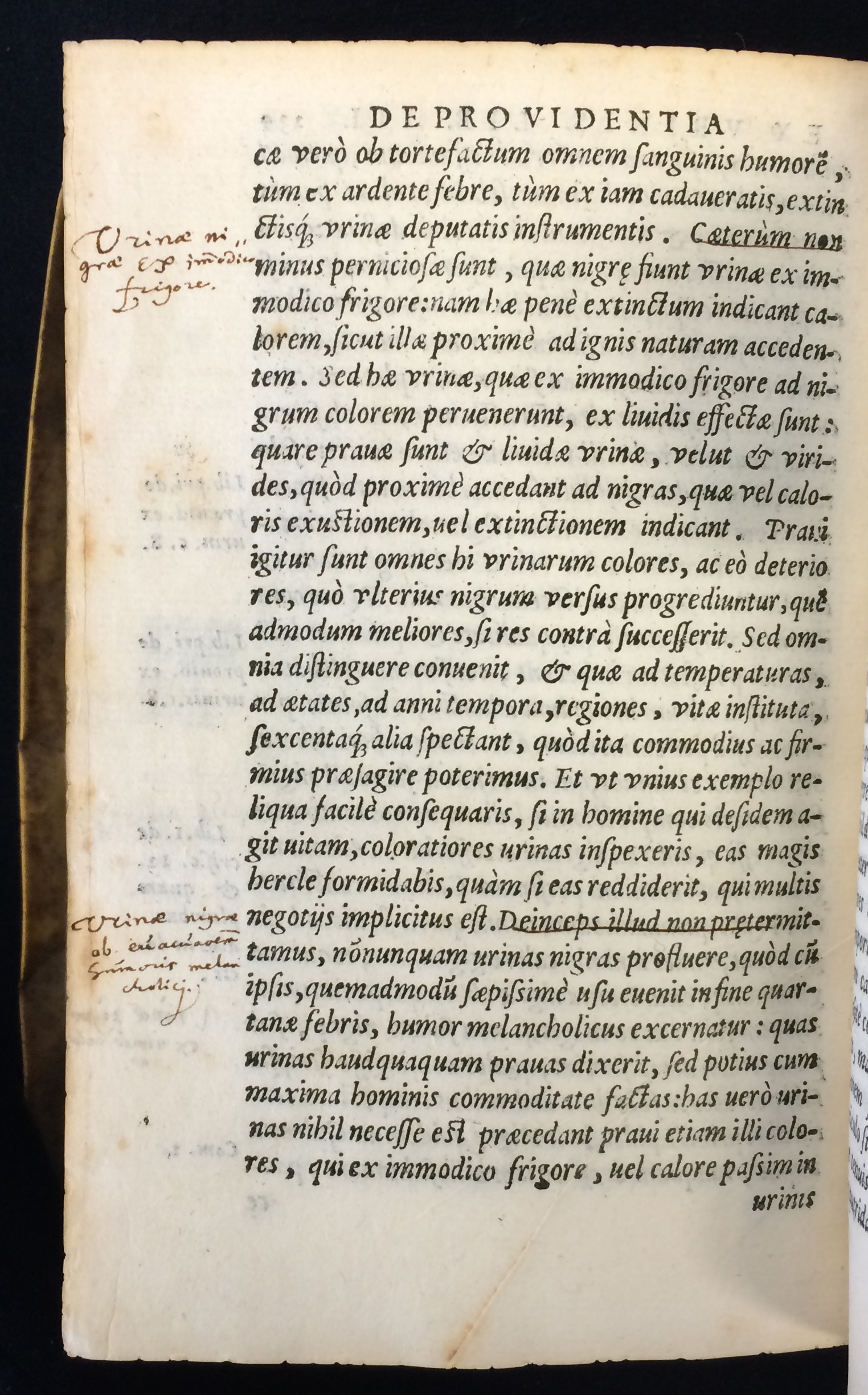The phrase"gauffered edges" refers to the technique of decorating the edges of a book, often already gilded, by applying a heated tool or roll that produces small patterns. It can be made directly on the existing gold, or by placing an extra layer of colored gold over the first, and then tooling over the top gold. This technique was especially popular among German bookbinders in the sixteenth century. The gauffering was done with pointillé tools (literally, honeycomb tools), which creates the delicate effect of a succession of points. [1]

Gauffered fore-edge from our copy of Leonis Rogani Caietani Medici, in Galeni Libellum de pulsibus, ad tyrones, Commentarius; Leonis Rogani Caietani Medici de urinis libri tres. Venice: Jacobus de Maria, 1575
The book in question contains two medical commentaries in Latin by the Italian doctor Leon Roganus Caietanus. The first commentary is on Galen's treatise on the pulse. The second one discusses a Pseudo-Galen treatise on the examination of urine as a method for medical diagnosis. This copy is indeed an extraordinary addition to our History of Medicine Collection.

Main title page of Leonis Rogani Caietani Medici, in Galeni Libellum de pulsibus, ad tyrones, Commentarius; Leonis Rogani Caietani Medici de urinis libri tres. Venice: Jacobus de Maria, 1575

Title page of the second commentary in Leonis Rogani Caietani Medici, in Galeni Libellum de pulsibus, ad tyrones, Commentarius; Leonis Rogani Caietani Medici de urinis libri tres. Venice: Jacobus de Maria, 1575
A previous owner of this copy, perhaps from the sixteenth century, annotated the second treatise. For instance, as the following image shows, this reader was interested in passages dealing with the color of the urine. Here, the black urine (urina nigra) could be caused by extreme cold (ex immodico frigore) being a sign of disease; and black urine is also the result of the so-called "melancholy" (humor melancholicus), that is, hypochondria.

Annotated page from Leonis Rogani Caietani Medici, in Galeni Libellum de pulsibus, ad tyrones, Commentarius; Leonis Rogani Caietani Medici de urinis libri tres. Venice: Jacobus de Maria, 1575
In brief, this book was not merely the precious object that the gauffered edges might suggest. It was clearly read! In general, this copy reflects a common practice of Humanist scholars. They would commission a particular type of leather and tooled decoration for their bindings, whose sophistication depended on their financial means. More importantly, they also added learned annotations and underlined the text, perhaps as a tool for further study that could materialize into the publication of a new commentary on the same subject.
[1]Matt T. Roberts & Don Etherington. Bookbinding and the Conservation of Books: A Dictionary of Descriptive Terminology. Washington: Library of Congress, 1982. Online.